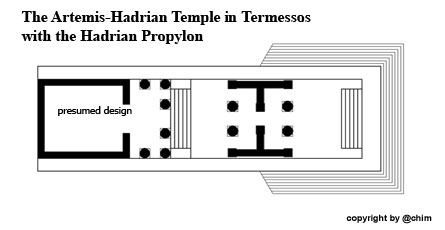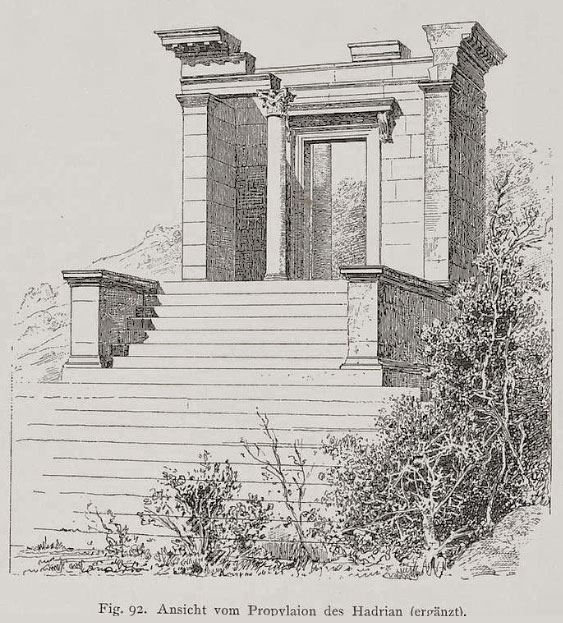 |
|
Ancient temples in Turkey Termessos |
||||||||||||||||||||
|
|
|
|||||||||||||||||||
|
||||||||||||||||||||
|
Karl Graf Lanckoroński wrote in 1892, freely taken over: The traveller entering this valley, surrounded by wooded hills, is struck above all by a doorway that rises above the bushes, the remains of a gate to which a wide staircase leads in two steps. The staircase is almost completely preserved; the presence of columns at this point is evidenced by the discovery of column drums and a 2.2 m cantilevered architrave spanning the central intercolumnum. Friezes and cornices were also found. A few steps behind this propylaion lie the ruins of the temple. It was an ionic peripteros with a cella about 8 m wide. We noted canneled column drums up to 1.02 m diameter, furthermore attic wall and column bases, as well as ionic capitals. |
||||||||||||||||||||
| Artemis | ||||||||||||||||||||
|
In Greek mythology, Artemis is the goddess of hunting, the forest, the moon and the guardian of women and children. She is one of the twelve great Olympic gods and therefore one of the most important deities of Greek mythology. She is the daughter of Zeus and Leto, and the twin sister of Apollo. She corresponds to Diana in Roman mythology. |
||||||||||||||||||||
|
|
||||||||||||||||||||
|
Emperor Hadrian |
||||||||||||||||||||
|
Publius Aelius Hadrianus was the fourteenth Roman emperor. He reigned from 117 until his death on 10 July 138. Hadrian, like his extensive relative and imperial predecessor Trajan, was at home in Hispania. As ruler he made intensive efforts to consolidate the unity of the Roman Empire, which he visited extensively in large parts.
Through grants and administrative measures at the level of the Roman provinces and cities, he promoted prosperity and strengthened the infrastructure. As he fought only a few wars, his reign was an epoch of peace for most of the empire. |
||||||||||||||||||||
| The history of Termessos: | ||||||||||||||||||||
|
|
||||||||||||||||||||
|
|
||||||||||||||||||||
|
|
||||||||||||||||||||
|
|
||||||||||||||||||||
|
|
||||||||||||||||||||
| Drawing: Karl Graf Lanckoroński l Städte Pamphyliens und Pisidiens l Band II, Wien 1892 | ||||||||||||||||||||
| Photos: @chim | ||||||||||||||||||||
| Translation aid: www.DeepL.com/Translator | ||||||||||||||||||||
| Source: Wikipedia and others | ||||||||||||||||||||
|
|




